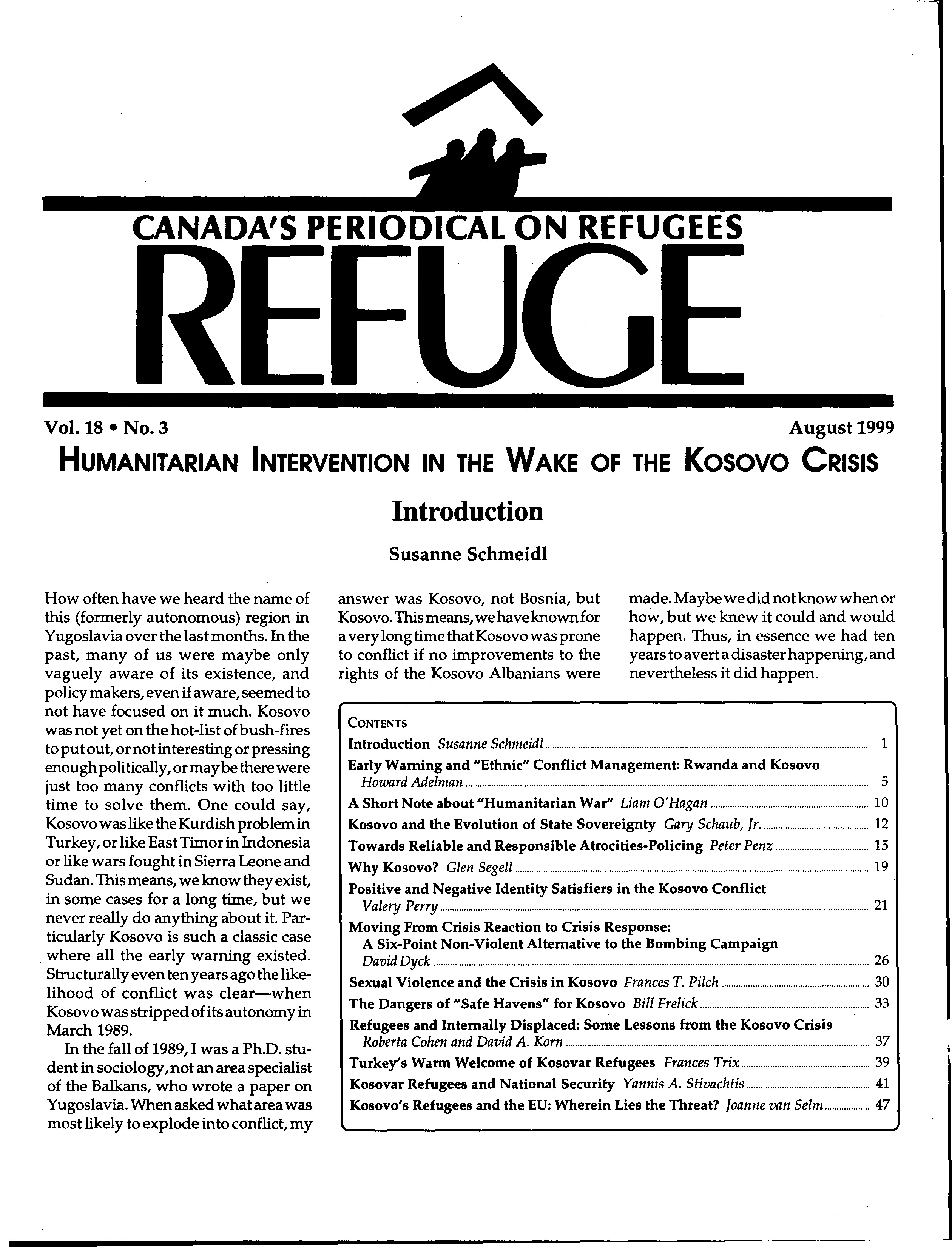Kosovo's Refugees and the ED: Wherein Lies the Threat?
DOI:
https://doi.org/10.25071/1920-7336.22026Keywords:
Kosovo, European Union, EU, policy, migration, security, refugees, identity, intoleranceAbstract
The crisis in Kosovo, which has developed over the course of a decade into a conflict involving more states than any since World War II has resulted in the displacement of almost the entire Kosovar- Albanian population, as well as of a great many Serbs and other regional populations. The European Union (EU) member states have prided themselves on their unity of action under NATO, in tackling this crisis. However, there has been no unity of policy toward the "refugees" - in spite of the entry into force of the Treaty of Amsterdam, with its goal of 'an area of freedom security and justice' involving a common asylum and immigration policy. The most frequently heard arguments for the reluctance to accept Kosovars in EU states are that this would only encourage ethnic cleansing, and that EU states already have too many immigrants, asylum-seekers and refugees who will not go home. The position of the "refugees" is thus a politically difficult one, and becomes a security issue in many senses. In this article, the author explores some ideas about the nature of the nexus between refugees (and migration more generally) and security in the post-Cold War world. In doing this, she will set out to critique the writings on 'societal security' in particular, posing the key question as to where exactly the threat lies as far as refugees are concerned.
Metrics
Downloads
Published
How to Cite
Issue
Section
License
Copyright (c) 1999 Joanne van Selm

This work is licensed under a Creative Commons Attribution-NonCommercial 4.0 International License.
Refuge authors retain the copyright over their work, and license it to the general public under the Creative Commons Attribution-Non Commercial License International (CC BY-NC 4.0). This license allows for non-commercial use, reproduction and adaption of the material in any medium or format, with proper attribution. For general information on Creative Commons licences, visit the Creative Commons site. For the CC BY-NC 4.0 license, review the human readable summary.







